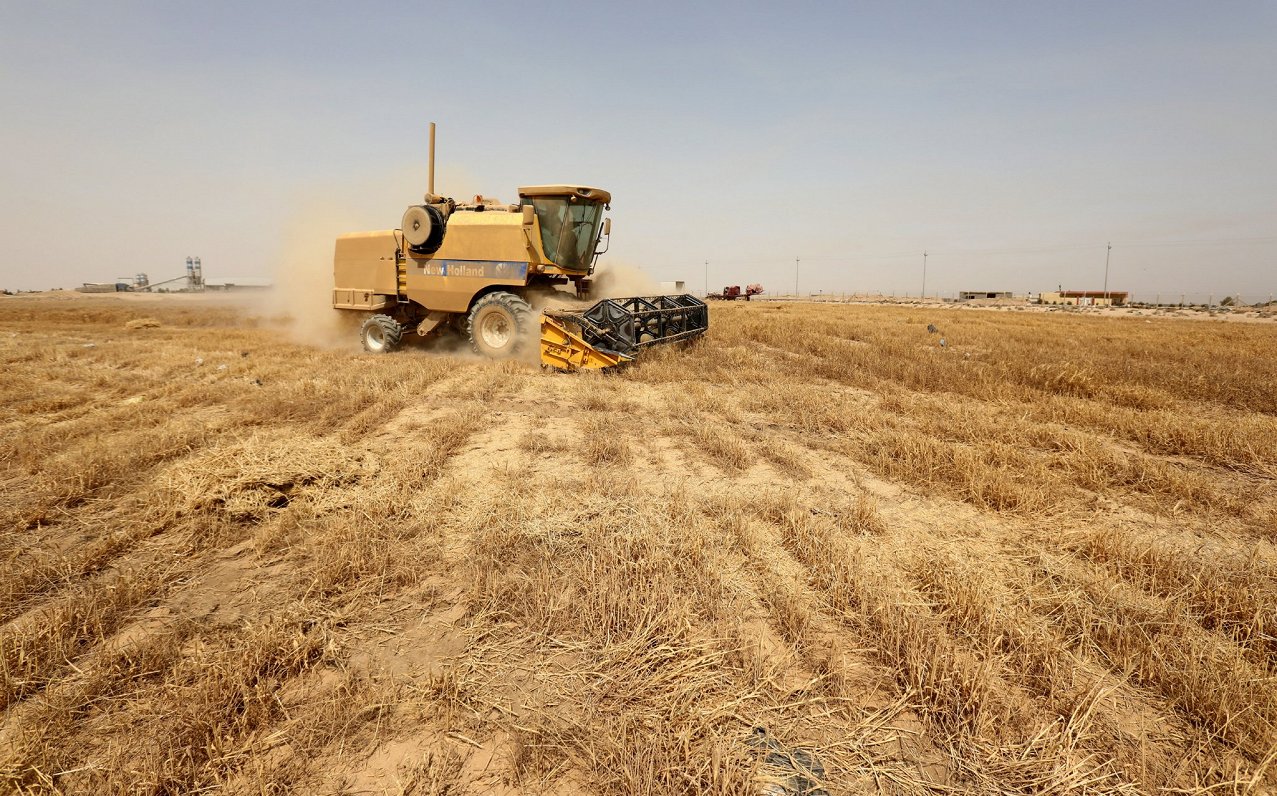As Raimonds Kasparinskis, associate professor of the University of Latvia, explains, desertification is a phenomenon that has manifested itself in different intensities in recent decades – most directly threatening approximately four billion hectares of land in dry, semi-arid and dry overhumid natural zones.
“The highest number of affected people is in deserts and semi-desert areas in South Asia and East Asia around the Sahara region, including North Africa and the Middle East, including the Arabian Peninsula. However, this problem is no longer foreign to Europe either. Although the processes of soil degradation in the member states differ considerably, the process of desertification in Europe around 33.8% can be observed, mainly in the countries of the northern Mediterranean,” says Kasparinskis.
In the leading positions in this respect is Spain, where soil desertification affects about 69% of the territory, a similar situation exists in Cyprus, but between 16% and 62% of desertification affects Greece, Portugal, Italy and France.
This further has a negative impact on the cultivation of various crops, as well as irrigation and land use options.
“Europe is increasingly experiencing the effects of desertification caused by intensive land use, particularly in Portugal, Spain, Italy, Greece, Malta, Cyprus, Bulgaria and Romania. Turkey is considered highly vulnerable to drought, land degradation and desertification. About 60% of its land areas are characterized by hydroclimatological conditions favorable to desertification. It is estimated that approximately half of Turkey’s land area is subject to moderate or high desertification,” says the researcher.
Asked if, as the summers get hotter, we can also start talking about this type of soil degradation in Latvia, Kasparinskis answers in the negative – the amount of precipitation is still sufficient here so that desertification does not yet affect Latvian agricultural land.
“In Latvia, there is no reason to worry about the risks of desertification, because precipitation exceeds evaporation, but this does not mean that we do not have other risks of soil degradation. Soil erosion, decrease in the content of organic substances in the soil, imbalance of nutrients, pollution, decrease in natural diversity, increase in soil acidity are just some of them. Only soil salinization and the formation of landslides are less important here. Since the European Union (EU) adopted the EU thematic strategy for soil protection in 2006, Latvia as a member state is not only necessary, but also useful to evaluate this aspect of land degradation in the process of its implementation,” says Kasparinskis.
The EU Soil Thematic Strategy is designed to preserve soil functions and defines the risks of soil degradation, but since there are no directives on soil protection in Europe, legislative power is currently a rather weak driver to address issues related to soil fertility.
On a global scale, in order to deal with the problem of desertification, the United Nations (UN) Convention “On combating desertification/land degradation in countries experiencing significant periods of drought and/or desertification, especially in Africa” has been in force since 1996 – Latvia joined this convention already in 2002.
Desertification leads to a rapid decrease in soil fertility and, gradually, to the complete destruction of the soil cover, resulting in a decrease in agricultural productivity, leading to both economic losses and food security problems.
“During the process of desertification, the soil moisture regime changes and soil salinization and compaction occur. Desertification means a decrease in soil fertility, which is affected by climate change, due to a decrease in precipitation and an increase in evaporation. This leads to changes in vegetation, resulting in a decrease in natural diversity, soil erosion and ecosystem development can no longer provide all the services it has provided so far,” explains Kasparinskis.
However, as the researcher points out, the main reasons for desertification are not only related to climate changes, but also to the economic activity of people, which manifests itself both in the form of intensified agriculture and the cutting down of forests and bushes, the use of fire in land management, as well as ill-considered land processing. which leads to increased soil erosion.
Other soil-degrading factors are population growth, overgrazing of territories and cultivation of unsuitable agricultural crops. In order to reduce the risks of soil desertification, Kasparinskis points out that the most important adaptation mechanisms are adaptation to climate change and monitoring of the actual state of soil resources, i.e. clarifying soil properties and evaluating changes in order to carry out sustainable soil management in the future.
In Latvia, it is not carried out to a sufficient extent.
Agricultural soils in Latvia have been mapped only in the period from 1959 to 1990 according to the soil classification systems of that time. The results of certain researches of recent years suggest that the real situation in nature tends to differ from the one recorded as a result of mapping. Therefore, in order to talk about sustainable soil use and management, in Latvia, in addition to appropriate land policy and management practices, it is also essential to conduct in-depth soil research and detailed monitoring.
The article series is co-financed by:
–
–


